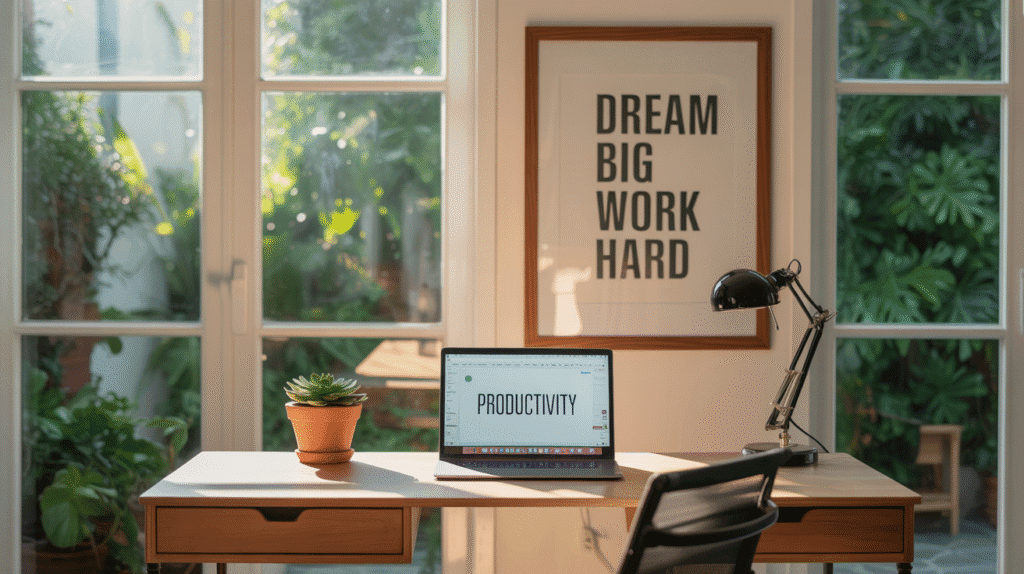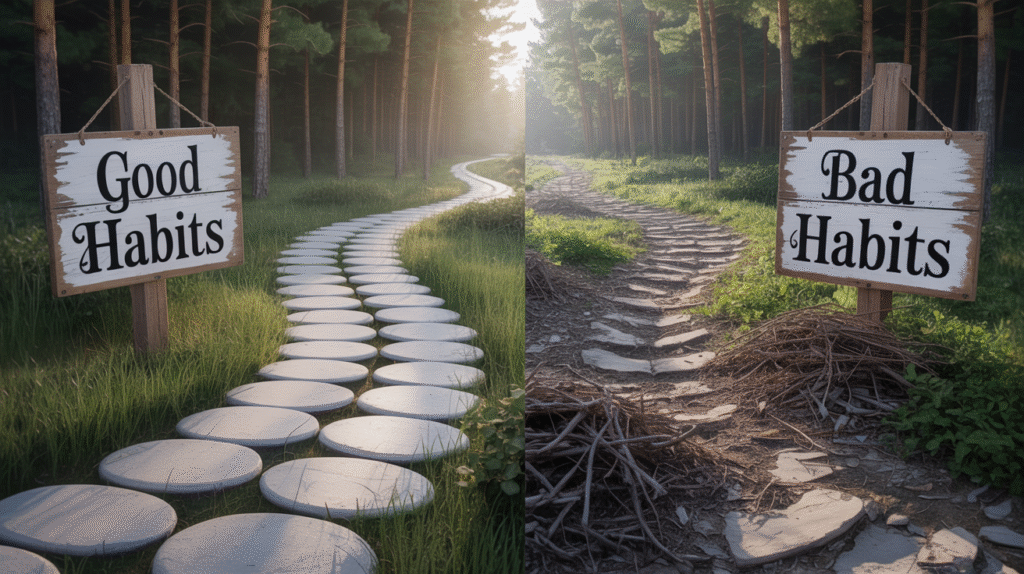
Most people believe that building good habits is all about willpower. If you’re strong enough, you’ll resist temptation and stay on track — right?
The truth is, willpower is a limited resource. No matter how motivated you are at the start, over time it weakens under stress, fatigue, and daily distractions. That’s why changing your environment often works better than relying on pure self-control.
In this article, we’ll explore how shaping your surroundings can make good habits almost effortless — and bad habits much harder to fall into.
Your brain is wired to respond automatically to the cues around you — often without conscious thought. That’s why environments filled with distractions, clutter, or unhealthy options can easily derail even the strongest intentions.
For example, if your kitchen counter is stacked with cookies, you’re much more likely to reach for one — even if you intended to eat healthily. If your workspace is messy and chaotic, procrastination becomes almost inevitable.
Research shows that environmental cues — what’s visible, accessible, and easy — have a profound impact on daily behavior. It’s not that you lack discipline; it’s that your surroundings are silently nudging you in a certain direction.
The good news? You can use this to your advantage. By designing an environment that promotes good decisions and minimizes temptations, you create a setup where success feels natural, not forced.
Shaping your environment isn’t about making huge changes — it’s about small tweaks that have a big impact over time. Here are some practical strategies:
Small shifts like these dramatically increase the likelihood that you’ll make better choices automatically, without needing endless reminders or willpower.

Success often comes down to removing friction from good habits — and adding friction to bad ones. This principle can transform your daily behavior without feeling like a battle.
Here’s how to apply it:
| Goal | Make Good Habits Easy | Make Bad Habits Hard |
|---|---|---|
| Eat healthier | Prep veggies in advance and keep them ready to grab | Hide chips and sweets in hard-to-reach places |
| Exercise more | Keep gym clothes visible and accessible | Remove barriers to starting (like untangling headphones) |
| Focus better | Block distracting websites and use a dedicated workspace | Keep phones out of sight during work hours |
By designing your environment to support good decisions and discourage bad ones, you reduce the need for self-control. It’s not about being tougher — it’s about being smarter.

If you want to change your behavior, don’t just work harder — work smarter by shaping your surroundings.
An environment designed for success makes good choices the default and bad choices inconvenient. Over time, this silent influence rewires your habits, making the positive path feel natural rather than forced.
Start small: move a healthy snack into view, place your running shoes by the door, or organize a clutter-free desk. The easier you make the right actions, the more effortlessly you’ll stick to them — day after day.